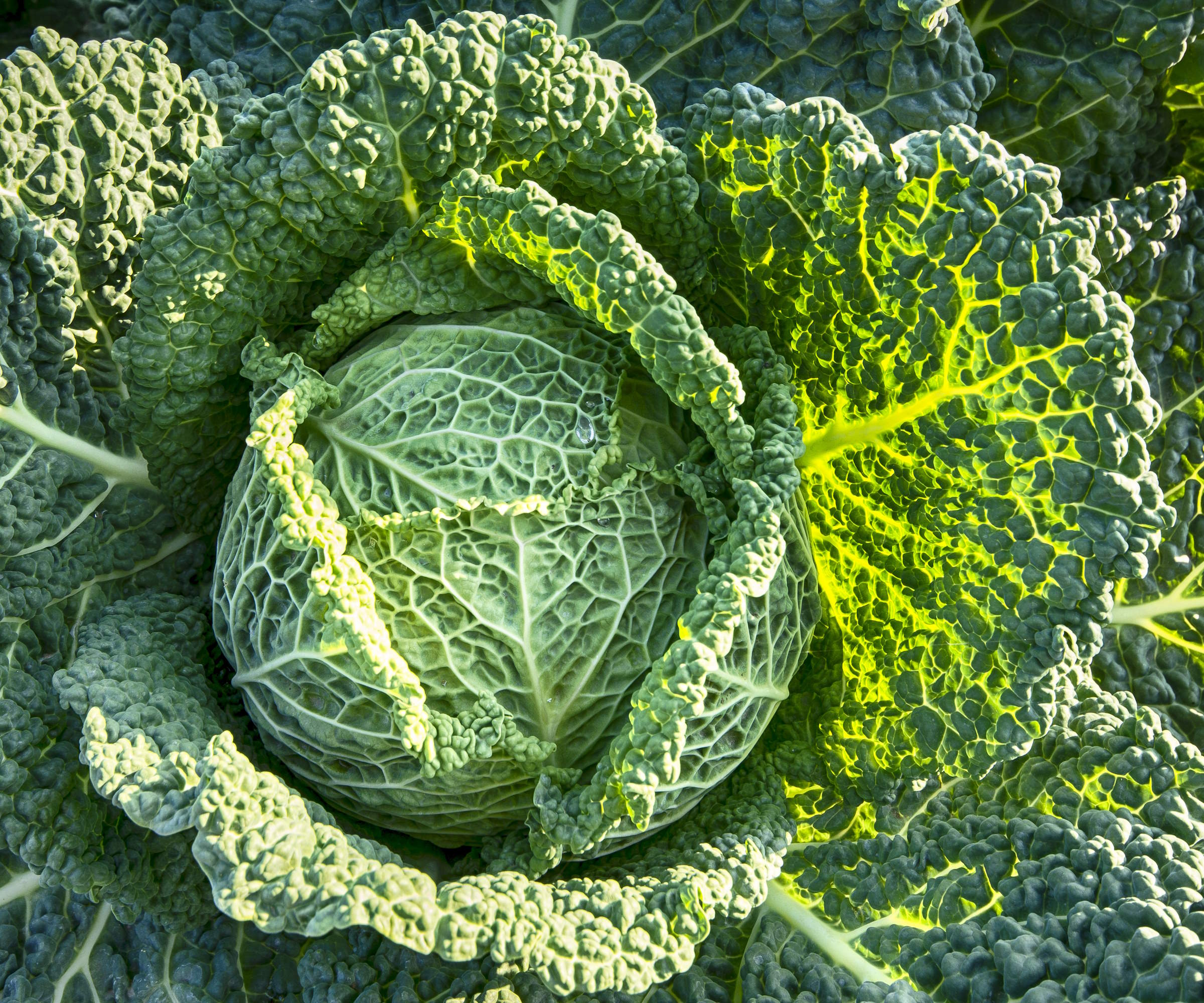
You can harvest winter cabbages between late fall and late winter to provide you with delicious and nutritious homegrown vegetables throughout the colder months.
The compact ball-shaped heads of winter cabbages are very simple to harvest and can be left out in the vegetable garden throughout winter to be picked whenever required. It is advisable to check before sowing, however, that any variety is suitably hardy for your climate, if you have particularly long and cold winters.
When you are planning a kitchen garden it pays to grow crops to provide you with harvests year-round. That is one benefit of winter cabbages, along with other brassicas, such as kale, cauliflower, and Brussels sprouts, as it means you can have homegrown crops from the kitchen garden throughout winter.

Why should you grow winter cabbages?
There are different types of cabbages that you can grow in a kitchen garden that will be ready to harvest at different times of year. They are classified by their head type and also hardiness.
Winter cabbages have tightly-bound heads and are the hardiest types, meaning you can harvest cabbages throughout the colder months of the year.
You can see the full range of cabbage seeds available at True Leaf Market
When to harvest winter cabbages

Winter cabbages can take between 120 and 180 days to get to maturity from sowing, or 60-90 days from transplanting, depending on the variety you are growing. The crop is usually sown from mid-spring onwards.
Charmaine Peters, Farm Director at Arden, says that when you harvest will depend on when you planted them. She explains: ’If you planted your cabbages in mid to late spring, they will be ready for harvest between late fall and late winter, November through February basically.’
Winter cabbages are ready to harvest from November onwards and are best harvested as-and-when required, as they are a crop that does not have a long storage life once picked.
There are certain indicators to look for that show when a cabbage is ready to be harvested, primarily the look and feel of the vegetable’s head.
‘Harvesting those cabbages should be left until the head feels solid and heavy. Ideally, this is after a light frost,’ says Kate Russell, author of Stop Wasting Your Yard. ‘As with other cruciferous vegetables, such as Brussels sprouts and cauliflower, frost sweetens their flavor.’
Squeeze the cabbage to check if the head is firm to the touch. When the cabbage is ready then try to harvest the head quickly, as the head can potentially split as the inner leaves continue to expand.
How to harvest winter cabbages

The method of how to harvest winter cabbages is very simple and involves common garden tools, such as a knife, pruning shears, or garden loppers to get through the thick stalk the plant has. Always make sure that any tools are clean and sharp as this will make harvesting easier and prevent spreading diseases around the garden. A pocket-sized sharpener, such as this Garden Tool Sharpener available at Walmart, can help keep tools sharp while out in the veg garden.
“To harvest a winter cabbage, use a sharp knife or garden shears to cut the stem just below the head,’ says Charmaine Peters.
‘Make a clean, diagonal cut to facilitate water runoff and reduce the risk of disease. Then, remove the outer leaves or any yellowish leaves from the head. Keep some green leaves as they provide protection in storage.’
Inspect the head for any slugs or snails that may live in the foliage during the cold temperatures of winter. The discarded leaves can be used to make compost, unless they are showing any signs of pests and disease - in which case they need to be discarded.
After you cut the head off the stalk, you can cut a cross in the stump and this may cause the production of smaller mini cabbages from the stem for a second harvest.
FAQs
Can you leave cabbage in the ground over winter?
Winter cabbages are hardy crops that can remain out in the vegetable garden to be harvested through December and into the new year. Keep an eye for pests, including rodents and slugs, munching at the plants as they look for food during winter. You may need to consider methods of keeping winter backyard pests away.
Does cabbage need to be harvested before frost?
Hardy winter varieties are frost-tolerant and can survive freezing temperatures. However, if you are growing spring cabbages, they want to be harvested before the frosts. If you live in a very cold US hardiness zone, prolonged exposure to heavy frosts and snow can cause damage to leaves and eventually harm even hardy winter cabbages, and ornamental cabbages that are grown to provide color during colder months. The use of a cloche, such as the Tierra Garden Kitchen Garden Cloche available at Walmart, can help protect cabbages from sustained frosts.
Winter cabbages make good vegetables to grow in pots. If you have a vegetable container garden and want to grow cabbages, it is best to use larger containers. For example, a pot around 12 inches wide is a good size to grow one cabbage.







